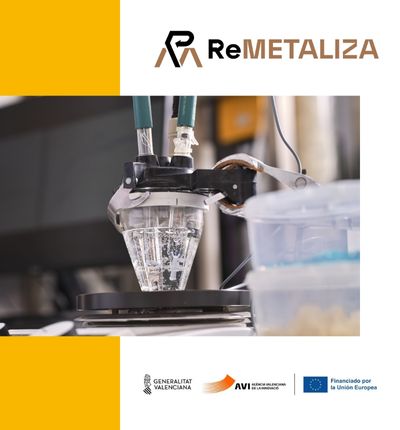 Industrial symbiosis between traditional sectors in the Valencian Community through recovery and valorisation of heavy metals – ReMETALIZA
Industrial symbiosis between traditional sectors in the Valencian Community through recovery and valorisation of heavy metals – ReMETALIZA
The Valencian Community and, in general, Spain and the European Union (EU) are highly dependent on the supply of materials such as copper (Cu) and chromium (Cr). Both these and other metals are used in key technologies to achieve the green transition. On the other hand, there is a large amount of residues very rich in Cu and Cr, which are currently thrown away in landfills, causing an environmental risk due to their high toxicity.
However, can innovative technologies to valorise these residues be applied? Would these results be useful in different sectors? And finally, would industrial symbiosis, whereby by-products from some industries are derived into secondary feedstock for others, contribute to achieving these objectives?
To this end, the experimental development and analysis of synergies between five characteristic sectors of the Valencian Community (metal-mechanical, toy-plastic, textile, footwear, and ceramics) for the recovery of heavy metals (Cu, Cr, etc.) from waste with a high content of these two metals is being carried out.
In order to achieve this aim, an analysis and study of the residue streams for treatment is first carried out, determining the concentration of metals, the impurities contained and the availability of the residue, thus facilitating the selection of the most suitable streams to be used and the most appropriate metal recovery technologies.
Afterwards, different technologies for the treatment of the selected residues are studied and validated to recover the metals in different chemical forms (salts, metallic form, concentrated solution, etc.) contained in the residues. The recovered materials are characterised to evaluate whether they comply with the conditions and properties specified by the different sectors. Considering the data obtained, the most suitable technologies and conditions for the production of secondary feedstock are selected.
This is followed by the production of secondary feedstock, with the technologies selected for each residue and type of secondary feedstock, for their use and validation in different applications (additive for plastic masterbatches, surface treatments, textile inks and ceramic glazes) so that they can then be produced and validated in a wide range of consumer products.
Lastly, a model of industrial symbiosis between the actors and industries involved is designed, where the possibilities of industrial scaling and replicability in this and other geographical areas are analysed.
Such action will significantly reduce dependence on the supply of metals, such as Cu and Cr, in the Valencian Community. This will also help to bring Europe into the framework of a resource-efficient economy at national and European level.
Therefore, “Circular economy solutions in industrial symbiosis for the recovery of heavy metals” are provided.
The ReMETALIZA project is led by the Spanish company AIJU and participated by the companies Colortec, ACTECO and Estampados Prato, the research centre AIDIMME and the University of Alicante (Valencian Community, Spain).
File number: INNEST/2023/23
Funding: Agència Valenciana d’Innovació (Valencian Innovation Agency)
Start date: 01-05-2023
End date: 31-12-2025

